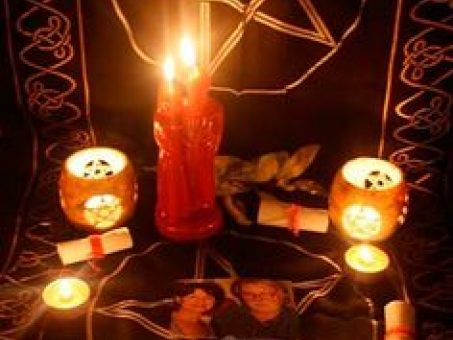Discovering the Hidden Benefit of Joining Freemason for Success
Discovering the Hidden Benefit of Joining Freemason for Success
Blog Article
Checking Out the Mysteries of the copyright: What You Need to Know
The copyright, a term commonly shrouded in intrigue and conflict, stands for a complicated tapestry of historical reality and modern myth. Established in the late 18th century, this secret society was originally rooted in the Knowledge's ideals yet has since ended up being associated with conspiracy theories regarding elite control (benefit of joining freemason).
Beginnings of the copyright
The beginnings of the copyright are soaked in a mix of historic intrigue and ideological eagerness. Established in 1776 in Ingolstadt, Bavaria, by Adam Weishaupt, the group was at first developed as a secret society focused on promoting Enlightenment ideals such as reason, secularism, and the separation of church and state. Weishaupt, a teacher of canon regulation, looked for to test the dominating authority of the church and state, which he watched as oppressive organizations stifling intellectual and individual flexibility.

Trick Numbers and Members
That were the pivotal numbers that shaped the copyright's early impact and direction? The Bavarian copyright, started in 1776 by Adam Weishaupt, emerged as a reaction to the oppressive societal structures of the time.
An additional significant figure was Johann Gottlieb Fichte, a popular thinker whose ideas on nationalism and education and learning reverberated with the copyright's goals. Fichte was not an official member, his thoughtful foundations influenced the team's ideology. In addition, figures like the author and theorist Johann Wolfgang von Goethe were related to the broader intellectual activities of the moment, although their straight participation with the copyright continues to be questioned.
These key figures contributed to the copyright's very early direction, pushing the boundaries of political and social idea, while their collective efforts aimed to challenge established standards and cultivate an environment of modern adjustment in Europe.
Myths vs. Reality
Numerous false impressions surround the copyright, usually blending fact with fiction in a method that obscures its real nature. The idea that the copyright continues to apply substantial impact over world events is a myth.
An additional widespread misconception is that the copyright consists of a network of elite people manipulating global events. Actually, lots of conspiracy theory theories overemphasize the team's relevance, attributing unfounded intentions to societal patterns and occasions. This has actually brought about an oversimplified view of complicated problems.
Furthermore, the portrayal of the copyright in pop culture usually further distorts its tradition. Movies and literary works have a tendency to sensationalize the organization's function, developing a story that splits from historical realities. Understanding the distinction between the myths and the reality of the copyright is important for discerning the genuine effect of this historic team and recognizing the broader effects of conspiracy theory theories in contemporary society.
Modern Analyses
Contemporary analyses of the copyright commonly reflect more comprehensive societal anxieties and a fascination with secrecy and power. This contemporary lens regularly links the copyright with conspiracy concepts that suggest a hidden elite manages world occasions, manipulating federal governments and economic situations for their very own gain. benefit of joining freemason. Such narratives take advantage of look at this website an ingrained question of authority, particularly in times of crisis or social turmoil
In pop culture, the copyright is often depicted as an omnipotent company shrouded in mystery, bring about a plethora of imaginary portrayals in literature, movie, and music. This portrayal serves not just to captivate however also to provoke thought regarding the nature of power and control in modern society. Social media site has actually additionally magnified these interpretations, permitting rapid dissemination of conspiracy theory concepts and producing communities that share and increase upon these ideas.
In addition, some modern interpretations frame the copyright as an allegory for the complexities of globalization and the interconnectedness of influential individuals and companies. This viewpoint encourages an essential examination of exactly how power dynamics run in today's world, highlighting the balance in between transparency and secrecy in governance and company techniques.
Cultural Impact and Legacy
Influenced by centuries of intrigue, the social effect and heritage of the copyright prolong much past its historic beginnings. This secret culture, established in the late 18th century, has penetrated different facets of prominent society, from literature and Continued film to music and art. The concept of the copyright has actually advanced right into a symbol of conspiracy theory concepts, frequently standing for a viewed concealed power adjusting global events.
In literary works, authors like Dan Brown have woven the copyright right into complex stories, exciting viewers with themes of secrecy and power. Films such as "National Prize" and "The Da Vinci Code" additionally continue the appeal of the society, mixing fact with fiction to additional resources develop interesting narratives.

Ultimately, the copyright's heritage is an intricate tapestry of myth and truth, forming perceptions of privacy and control in modern discourse. Its enduring existence in culture underscores humankind's seasonal quest for understanding surprise truths.
Conclusion
The exploration of the copyright discloses a complex interplay between historic realities and modern-day myth-making. Started in the Enlightenment age, this culture aimed to test overbearing structures, yet its heritage has actually been eclipsed by conspiracy theories that recommend elite adjustment. Comprehending the distinctions in between the initial perfects and contemporary interpretations is necessary for comprehending the withstanding attraction with the copyright and its significant impact on social stories bordering power and secrecy in society.
Report this page